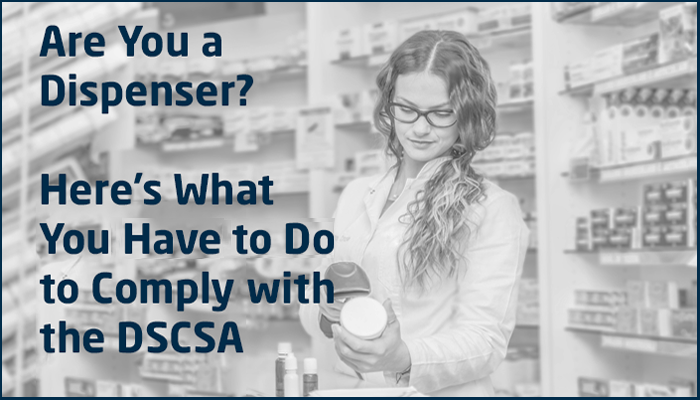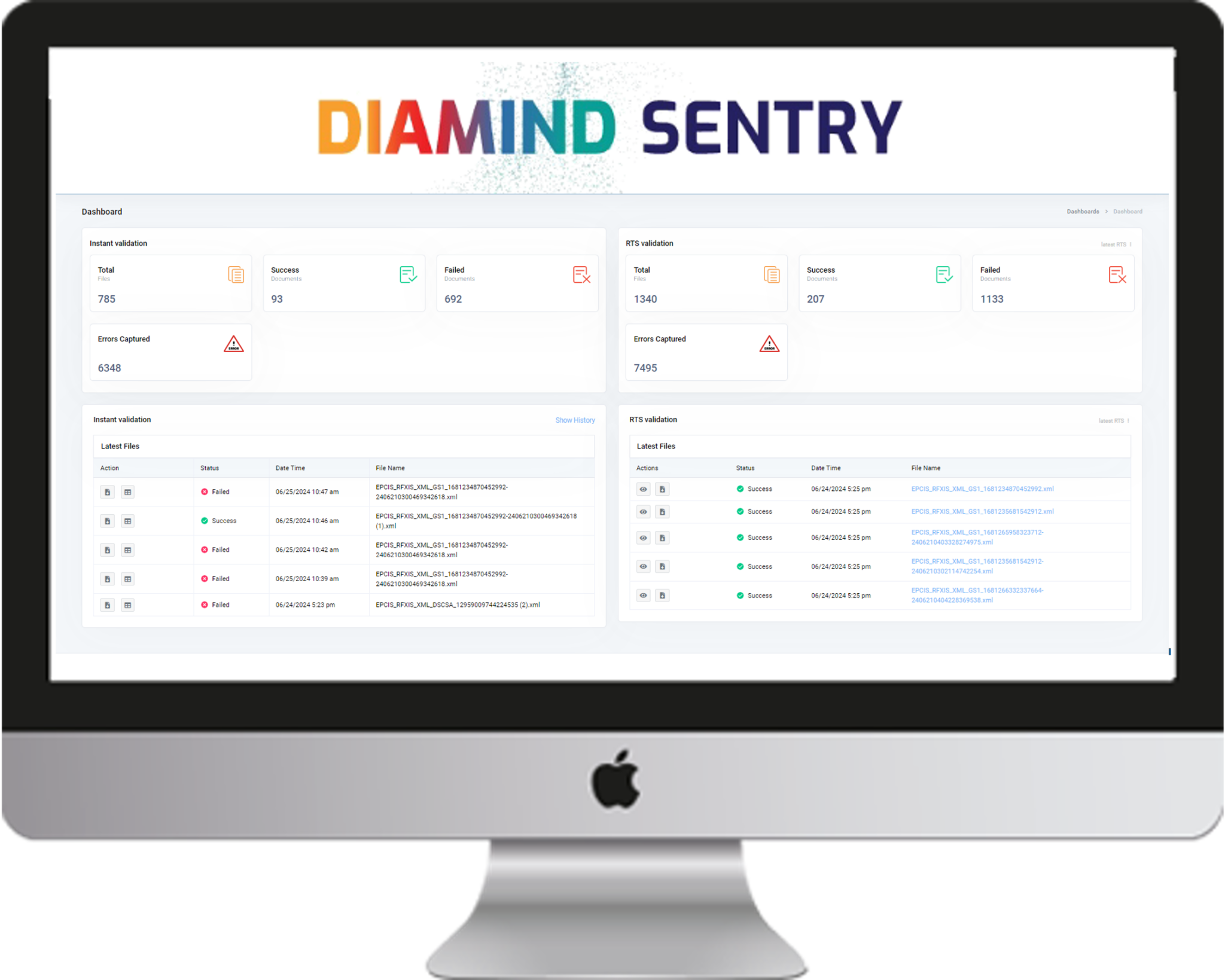If you’re a pharma dispenser, the Drug Supply Chain Security Act (DSCSA) is going to fundamentally change how you do business. What do pharma dispensers have to do for the DSCSA, you ask? There’s a big deadline coming up this November, but let’s take things in order. Here we go!
First things first: What is the DSCSA?
The DSCSA was created as Title II of the Drug Quality and Security Act (DQSA), passed by Congress in November 2013. It’s an initiative to prevent the introduction and distribution of counterfeit, stolen, contaminated, or otherwise harmful drugs in the United States. It outlines steps to build an interoperable electronic system to identify and trace prescription drugs as they are distributed throughout the country.
The DSCSA is being rolled out in two phases:
-
- Phase I (2015–2023) addresses lot-level traceability. This means exchanging information about every package of medication so supply chain stakeholders can see exactly where it has been.
- Phase II (2023) is complete unit-level serialization of the U.S. drug supply chain. This means stakeholders will have to electronically track products at the individual package level.
Are you considered a dispenser under the DSCSA?
According to the DSCSA, a dispenser is “a retail pharmacy, hospital pharmacy, a group of chain pharmacies under common ownership and control that do not act as a wholesale distributor, or any other person authorized by law to dispense or administer prescription drugs, and the affiliated warehouses or distribution centers of such entities under common ownership and control that do not act as a wholesale distributor.”
If you dispense only products to be used in animals, you are not a dispenser under the DSCSA.
2016-present: What do pharma dispensers have to do for the DSCSA?
Here’s a no-frills answer to our question, What do pharma dispensers have to do for the DSCSA? This is everything you must be doing right now.
Exchange “T3” information. Dispensers must be able to exchange “T3” information about every drug they buy and who handled it each time it changes ownership in the United States. This “product tracing information” includes Transaction Information (TI) about a product (e.g., proprietary or established name or names and the strength and dosage form); Transaction History (TH), an electronic statement with the TI for every transaction going back to the manufacturer; and a Transaction Statement (TS), which is an electronic statement confirming the entity transferring ownership. TH is required until the final November 27, 2023, deadline.
Confirm trading partners are licensed or registered. If you can’t confirm your partners are licensed or registered, you can’t do business with them. There’s an FDA database to check the registration of manufacturers and repackagers and the licensing of wholesale distributors and third-party logistics providers. For dispenser-to-dispenser transactions, you must check licensing through state authorities.
Receive, store, and provide product tracing documentation. This is all about the T3 information. You must accept only prescription drugs with proper T3 information. You must store the T3 information for six years. And you must generate and provide all T3 information when you sell a prescription drug to a trading partner.
Investigate and properly handle suspect and illegitimate drugs. As you might imagine, this is a big part of the answer to our question, What do pharma dispensers have to do for the DSCSA? Suspect and illegitimate drugs include drugs that may be counterfeit, diverted, stolen, intentionally adulterated, or unfit for distribution.
As a pharma dispenser, you must quarantine and investigate these drugs to determine if they are fake. If they are determined to be fake, you should work with the manufacturer and take specific action to ensure they do not reach patients/consumers. You must also notify the FDA and trading partners (i.e., those they bought the drug from and those they sold it to) about the compromised drug.
November 2020 deadline: What do pharma dispensers have to do for the DSCSA?
The DSCSA deadline for pharma dispensers is November 27, and it’s about authenticating and verifying drugs. You’ll have to be able to authenticate and verify all the medicines you buy before selling them. This comes down to two key requirements:
-
- You may buy and sell only products encoded with product identifiers (PIs). A PI is a standardized graphic with three elements: the product’s standardized numerical identifier (SNI), which comprises the National Drug Code plus a unique alphanumeric serial number); a lot number; and an expiration date. PIs must be in human- and machine-readable formats.
- You must verify every product at the package level, including the SNI. The FDA defines a package as “the smallest unit placed into interstate commerce by the manufacturer or the repackager that is intended by that manufacturer or repackager, as applicable, for individual sale to the pharmacy or other dispenser of the drug product.”
Final Thoughts
Traceability and serialization technology is the cornerstone of the DSCSA — it is also the cornerstone of our business. rfxcel has been developing leading-edge track and trace and serialization solutions since 2003. Our supply chain experts have the DSCSA in their DNA. What do pharma dispensers have to do for the DSCSA? Let us go beyond the basics we’ve explained here and help you be compliant forever.
Contact us today to learn more about how we can help you with the DSCSA and your other supply chain needs. ANd be sure to download our “Dispensers and the DSCSA white paper.”





